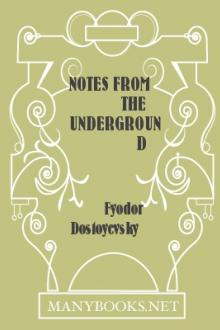Ancient America, in Notes on American Archaeology by John D. Baldwin (best ebook reader ubuntu .txt) 📖

- Author: John D. Baldwin
- Performer: -
Book online «Ancient America, in Notes on American Archaeology by John D. Baldwin (best ebook reader ubuntu .txt) 📖». Author John D. Baldwin
The Project Gutenberg EBook of Ancient America, in Notes on American
Archaeology, by John D. Baldwin
This eBook is for the use of anyone anywhere at no cost and with
almost no restrictions whatsoever. You may copy it, give it away or
re-use it under the terms of the Project Gutenberg License included
with this eBook or online at www.gutenberg.net
Title: Ancient America, in Notes on American Archaeology
Author: John D. Baldwin
Release Date: August 21, 2008 [EBook #26382]
Language: English
*** START OF THIS PROJECT GUTENBERG EBOOK ANCIENT AMERICA ***
Produced by Julia Miller and the Online Distributed
Proofreading Team at http://www.pgdp.net (This file was
produced from scans of public domain material produced by
Microsoft for their Live Search Books site.)
Transcriber’s Note
A number of typographical errors have been maintained in the current version of this book. They are marked and the corrected text is shown in the popup. A list of these errors is found at the end of this book.
IN
NOTES ON AMERICAN ARCHÆOLOGY.
By JOHN D. BALDWIN, A.M.,
AUTHOR OF “PRE-HISTORIC NATIONS.”
WITH ILLUSTRATIONS.
NEW YORK:
HARPER & BROTHERS, PUBLISHERS,
FRANKLIN SQUARE.
Entered according to Act of Congress, in the year 1871, by
John D. Baldwin,
In the Office of the Librarian of Congress, at Washington.
The purpose of this volume is to give a summary of what is known of American Antiquities, with some thoughts and suggestions relative to their significance. It aims at nothing more. No similar work, I believe, has been published in English or in any other language. What is known of American Archæology is recorded in a great many volumes, English, French, Spanish, and German, each work being confined to some particular department of the subject, or containing only an intelligent traveler’s brief sketches of what he saw as he went through some of the districts where the old ruins are found. Many of the more important of these works are either in French or Spanish, or in great English quartos and folios which are not accessible to general readers, and not one of them attempts to give a comprehensive view of the whole subject.
Therefore I have prepared this work for publication, believing it will be acceptable to many who are not now much acquainted with the remains of Ancient America, and that some who read it may be induced to study the but as Ancient America covers all time previous to the discovery by Columbus, they may not be deemed out of place. Materials for the paper on “Antiquities of the Pacific Islands” came to me from the Pacific World while I was preparing the others. The discovery of the Pacific is so intimately connected with the discovery of America, that this paper would not be out of place even if the Mexican and Peruvian traditions did not mention that a foreign people communicated with the western coast of America in very ancient times.
Worcester, Mass., November, 1871.
CONTENTS. Page I. ANCIENT AMERICA.—THE MOUND-BUILDERS 13 Works of the Mound-Builders 14 Extent of their Settlements 31 Their Civilization 33 Their Ancient Mining Works 43 II. ANTIQUITY OF THE MOUND-BUILDERS 47 How long were they here? 51 III. WHO WERE THE MOUND-BUILDERS? 57 Not Ancestors of the Wild Indians 58 Brereton’s Story 62 American Ethnology 65 Who the Mound-Builders were 70 IV. MEXICO AND CENTRAL AMERICA 76 Their Northern Remains 77 The “Seven Cities of Cevola” 85 Central Mexico 89 The great Ruins at the South 93 V. MEXICO AND CENTRAL AMERICA 103 Palenque 104 Copan and Quiragua 111 Mitla 117 An Astronomical Monument 122 Ruins farther South 123 The Ruins in Yucatan 125 Mayapan 127 Uxmal 131 Kabah 137 Chichen-Itza 140 Other Ruins 144 VI. ANTIQUITY OF THE RUINS 151 Distinct Eras traced 155 Nothing perishable left 156 “The Oldest of Civilizations” 15918. }Vases from the Mounds 41 19. Ancient Mining Shaft 45 20. Pueblo Ruin at Pecos 80 21. Modern Zuni 81 22. Ruins in the Valley of the Gila 83 23. Pueblo Building restored 87 24. Ground Plan of the Building 88 25. Arch of Los Monjas, Uxmal 98 26. Arch most common in the Ruins 100 27. Casa No. 1, Palenque 107 28. Casa No. 2 (La Cruz), Palenque 108 29. Great Wall at Copan 112 30. Ruins at Mitla 116 31. Great Hall at Mitla 118 32. A ruined “Palace” at Mitla 119 33. Mosaic Decoration at Mitla 120 34. Great Mound at Mayapan 127 35. Circular Edifice at Mayapan 129 36. Casa del Gobernador, Uxmal 132 37. Ground Plan 132
60. }Decorations at Chimu-Canchu 238 61. Edifice at Old Huanuco 239 62. Ground Plan of the Edifice 240 63. “Look-out” at Old Huanuco 240 64. Ruins at Pachacamac 242 65. Peruvian Copper Knives 249 66. Copper Tweezers 249 67. Golden Vase of Ancient Peru 251 68. Ancient Peruvian Silver Vase 251 69. Ancient Peruvian Pottery 252 70. Ancient Peruvian Pottery 253 ANCIENT AMERICA. I.
THE MOUND-BUILDERS.
One of the most learned writers on American antiquities, a Frenchman, speaking of discoveries in Peru, exclaims, “America is to be again discovered! We must remove the veil in which Spanish politics has sought to bury its ancient civilization!” In this case, quite as much is due to the ignorance, indifference, unscrupulous greed, and religious fanaticism of the Spaniards, as to Spanish politics. The gold-hunting marauders who subjugated Mexico and Peru could be robbers and destroyers, but they were not qualified in any respect to become intelligent students of American antiquity. What a select company of investigators, such as could be organized in our time, might have done in Mexico and Central America, for instance, three hundred and fifty years ago, is easily understood. In what they did, and in what they failed to do, the Spaniards who went there acted in strict accordance with such character as they had; and yet we are not wholly without obligation to some of the more intelligent Spaniards connected with the Conquest.
There are existing monuments of an American ancient history which invite study, and most of which might, doubtless, have been studied more successfully in the first part of the sixteenth century, before nearly all the old books of Central America had been destroyed by Spanish fanaticism, than at present. Remains of ancient civilizations, differing to some extent in degree and character, are found in three great sections of the American continent: the west side of South America, between Chili and the first or second degree of north latitude; Central America and Mexico; and the valleys of the Mississippi and the Ohio. These regions have all been explored to some extent—not completely, but sufficiently to show the significance and importance of their archæological remains, most of which were already mysterious antiquities when the continent was discovered by Columbus. I propose to give some account of these antiquities, not for the edification of those already learned in American archæology, but for general readers who have not made the subject a study. My sketches will begin with the Mississippi Valley





Comments (0)